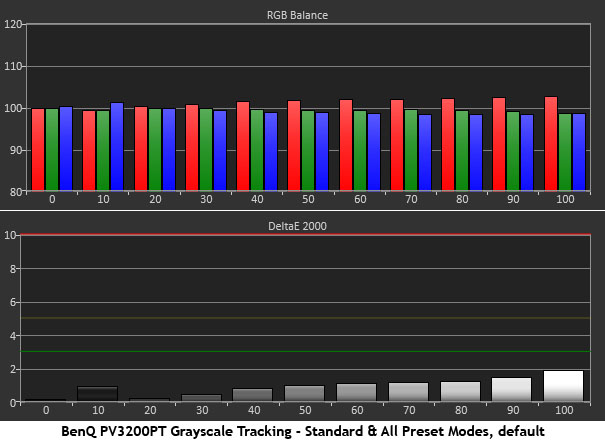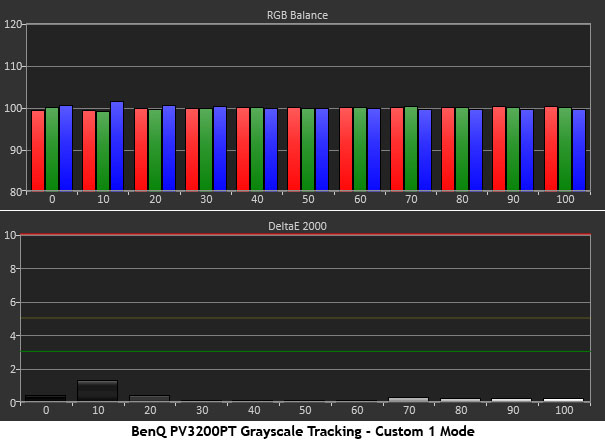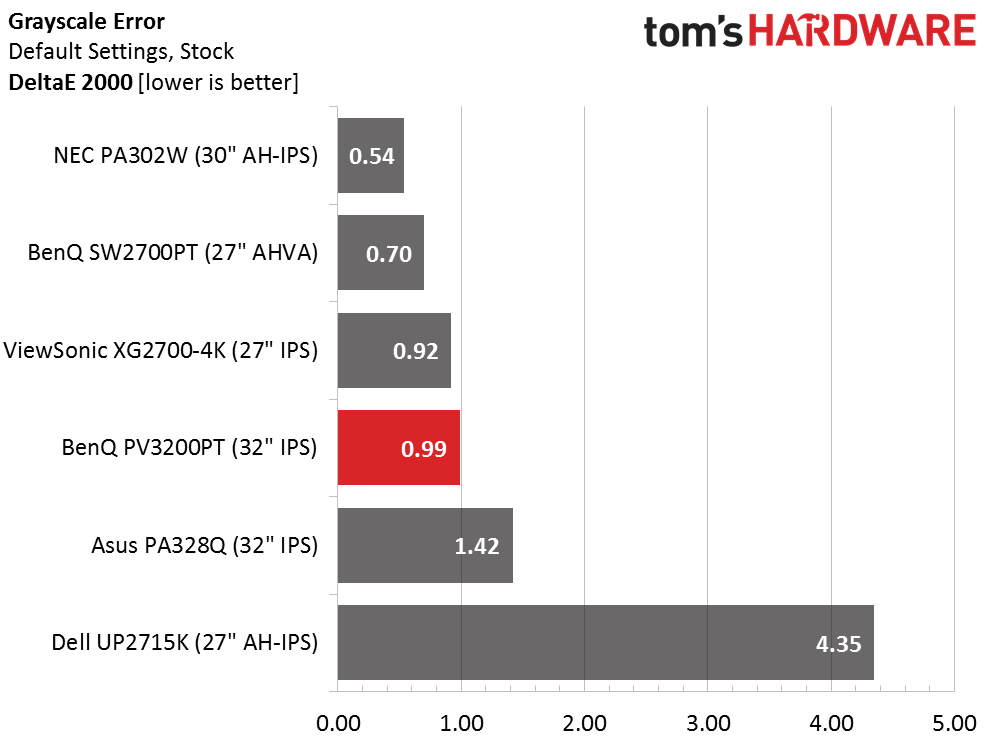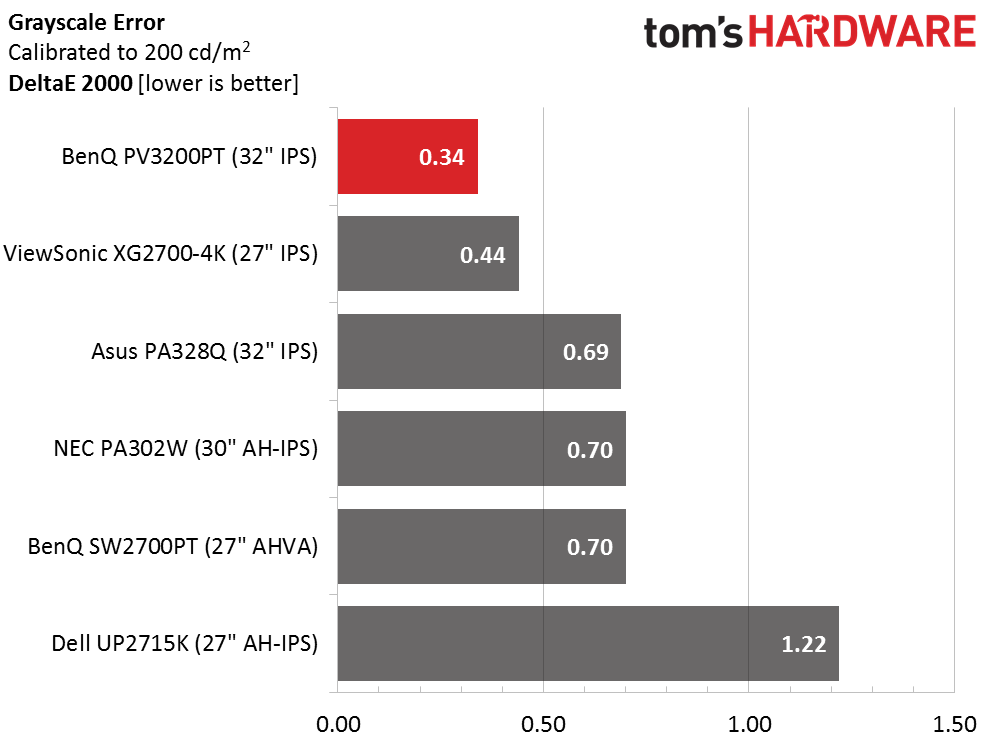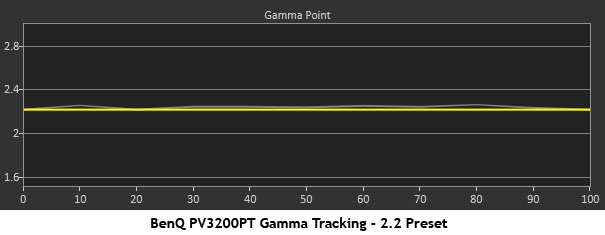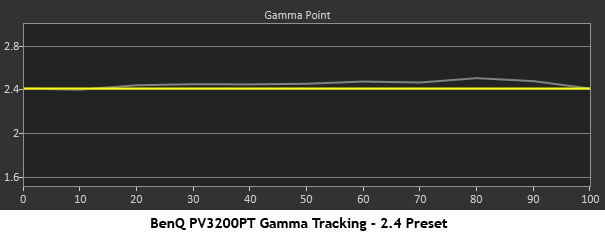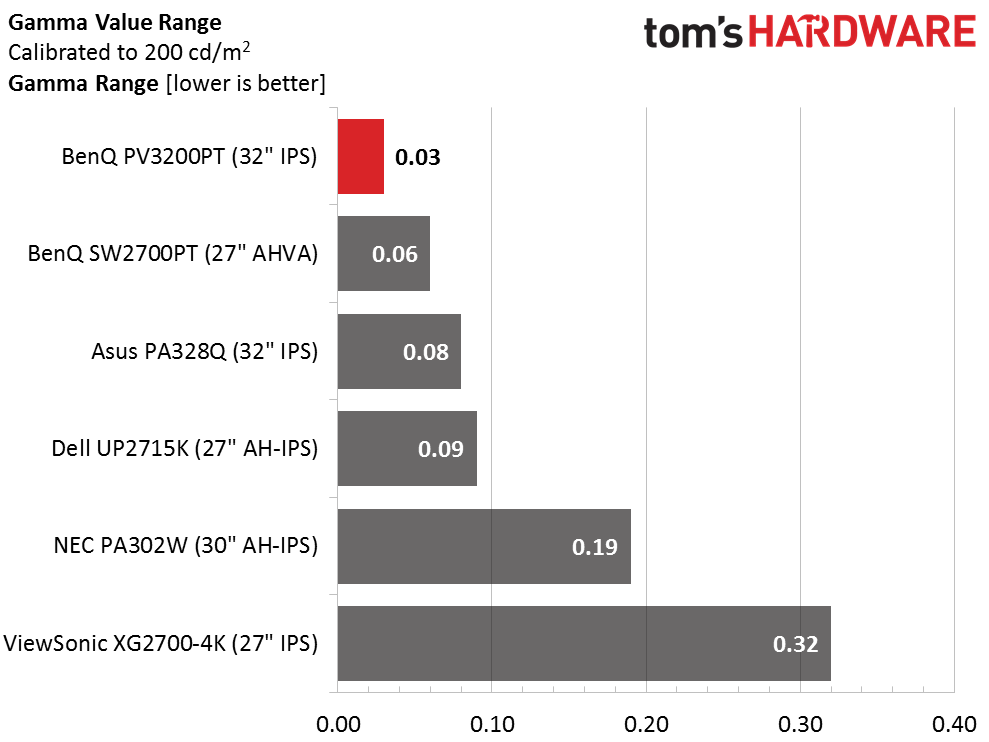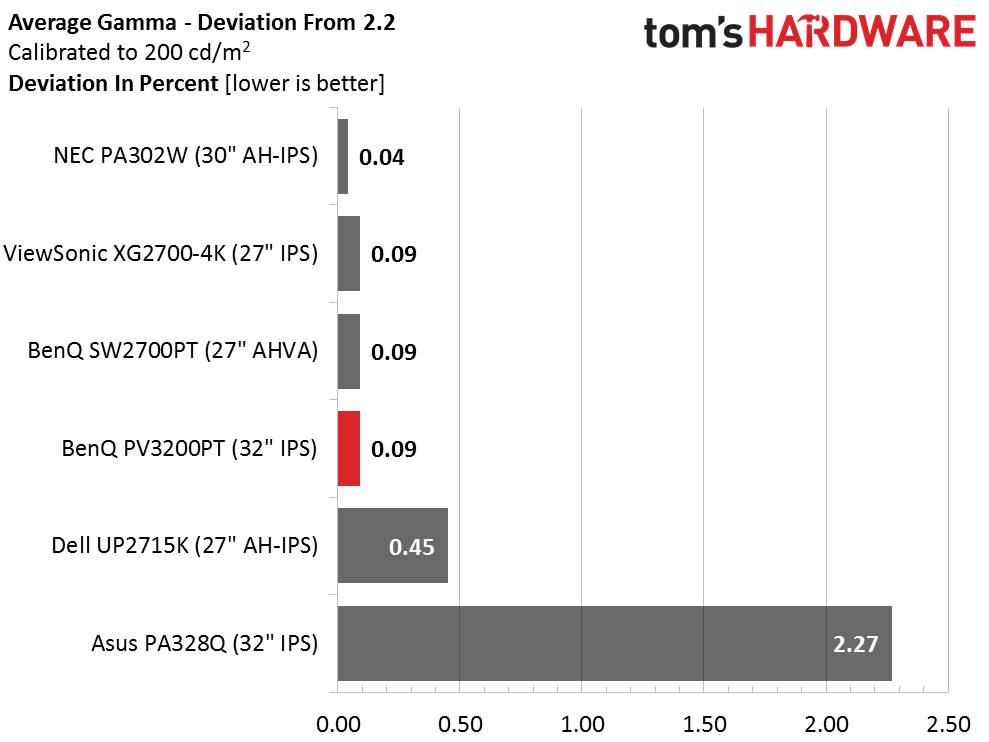BenQ PV3200PT 32-inch UHD Pro Monitor Review
Ultra HD is best enjoyed on a jumbo screen, so today we’re looking at a new BenQ professional video editing display, the 32-inch IPS-based PV3200PT.
Why you can trust Tom's Hardware
Grayscale Tracking And Gamma Response
Our grayscale and gamma tests are described in detail here.
To make changes to the PV3200PT’s white point, you’ll have to select one of the Custom Modes before proceeding. In the other color presets, RGB sliders are grayed out.
We said earlier that no changes were made to the RGB sliders. The above chart represents the grayscale tracking seen in all image modes with the backlight at its maximum setting. Visually it’s perfect but our i1Pro detects a tiny bit of red. With such low errors, there’s no need for changes.
Simply lowering the brightness control to the 200cd/m2 level takes away the extra red shown above and results in a picture-perfect graph. It’s so good it approaches the tolerance level of our instruments.
Here is our comparison group.
An out-of-box grayscale error of .99dE easily qualifies the PV3200PT for professional status. Even though it has extensive calibration options that work well, they aren’t needed here.
Reducing brightness also dropped the error level to an incredible .34dE. It doesn’t really get any better than this.
Get Tom's Hardware's best news and in-depth reviews, straight to your inbox.
Gamma Response
The PV3200PT’s gamma tracking is equally precise so we’re showing you the 2.2 and 2.4 presets, which are the most commonly-used values. Rec.709 and SMPTE-C default to 2.2 while EBU uses the slightly darker 2.4 standard.
Both presets track as they should, although the 2.4 option is just the tiniest bit too dark between 50 and 90 percent. This is an invisible and insignificant error.
Here is our comparison group again.
The chart numbers represent the 2.2 preset which is used in the majority of video and gaming content today. You can’t get much tighter than a .03 range of values.
We calculate gamma deviation by simply expressing the difference from 2.2 as a percentage.
The raw gamma average is 2.22 which results in a .09 percent variation. Again this is invisible and insignificant. While the Asus may appear to be way off by comparison, it’s actually quite close to the mark. It’s just that the rest of the displays are closer.
Current page: Grayscale Tracking And Gamma Response
Prev Page Brightness And Contrast Next Page Color Gamut And Performance
Christian Eberle is a Contributing Editor for Tom's Hardware US. He's a veteran reviewer of A/V equipment, specializing in monitors. Christian began his obsession with tech when he built his first PC in 1991, a 286 running DOS 3.0 at a blazing 12MHz. In 2006, he undertook training from the Imaging Science Foundation in video calibration and testing and thus started a passion for precise imaging that persists to this day. He is also a professional musician with a degree from the New England Conservatory as a classical bassoonist which he used to good effect as a performer with the West Point Army Band from 1987 to 2013. He enjoys watching movies and listening to high-end audio in his custom-built home theater and can be seen riding trails near his home on a race-ready ICE VTX recumbent trike. Christian enjoys the endless summer in Florida where he lives with his wife and Chihuahua and plays with orchestras around the state.
